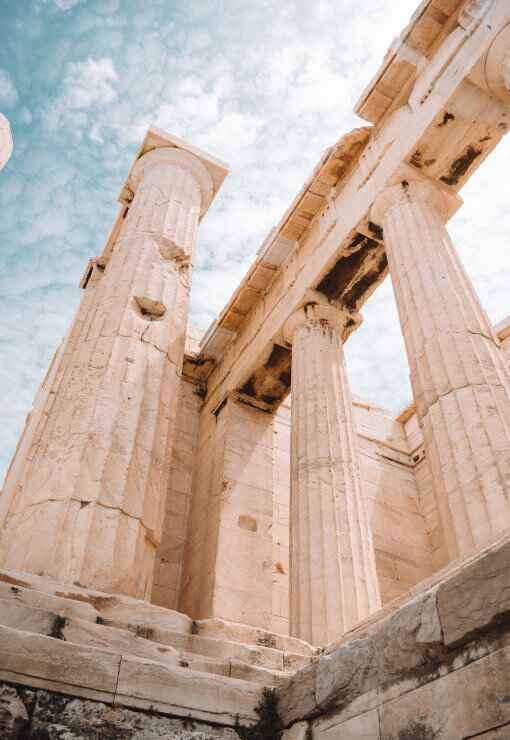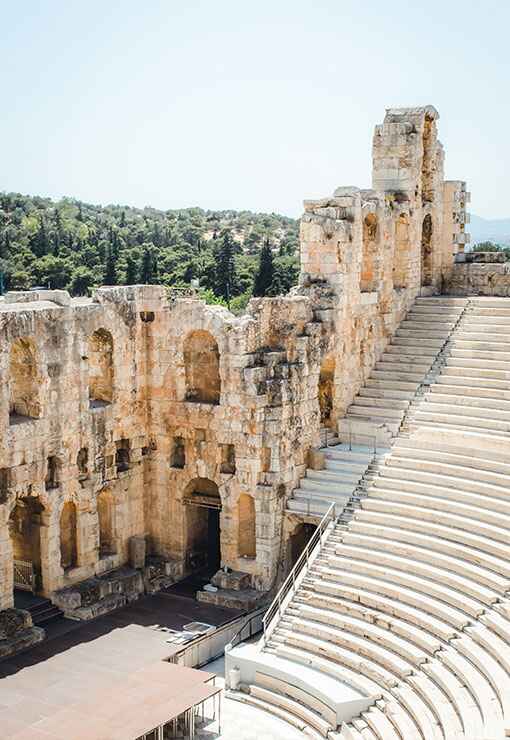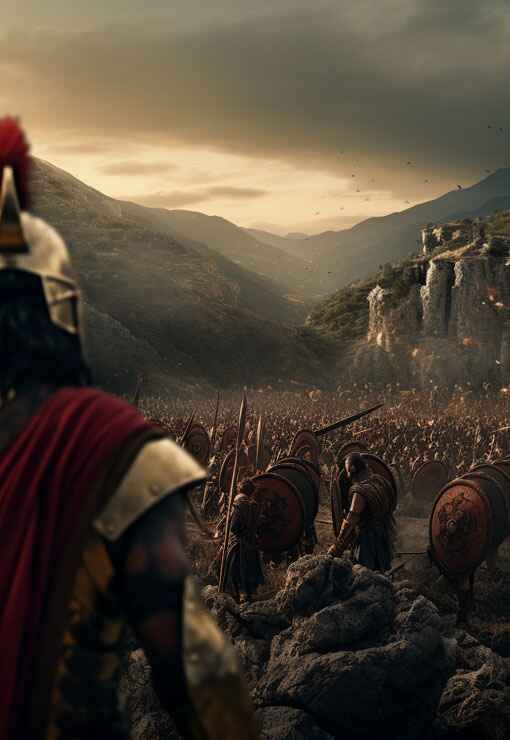Phidias
Born:
C. 480 BCE
Died:
C. 430 BCE
Phidias was an ancient Greek sculptor, painter, and architect renowned for his extraordinary skills and contributions to classical art during the Golden Age of Athens. He played a pivotal role in the design and creation of some of the most famous sculptures of ancient Greece, including the colossal statue of Zeus at Olympia and the sculptures of the Parthenon on the Acropolis in Athens. Here are key aspects of Phidias's life and artistic achievements:
Early Life: Phidias was born in Athens or its vicinity, around 480 BCE. Little is known about his early life and education, but he likely trained as a sculptor in the workshop of his father, Charmides.
Role in Athenian Art and Architecture: Phidias rose to prominence during the Golden Age of Athens, a period marked by cultural and artistic achievements. He became a central figure in the artistic circles of Athens, working closely with statesmen such as Pericles.
Statue of Athena Parthenos: One of Phidias's most famous works is the colossal chryselephantine (gold and ivory) statue of Athena Parthenos, housed in the Parthenon on the Acropolis in Athens. The statue stood over 30 feet tall and depicted the goddess of wisdom and warfare.
Zeus at Olympia: Phidias is also celebrated for the creation of the colossal statue of Zeus at Olympia, one of the Seven Wonders of the Ancient World. The statue, made of ivory and gold, depicted Zeus seated on a throne and was around 40 feet tall.
Athena Promachos: Phidias created another notable work, the bronze statue of Athena Promachos ("Athena who fights in the front line"). The statue was erected on the Acropolis and served as a symbol of the city's strength and defence.
Parthenon Frieze and Pediments: Phidias played a crucial role in the overall design of the Parthenon, including the decorative frieze that adorned the exterior of the temple. The frieze depicted the Panathenaic Procession, a grand procession held in honour of the goddess Athena during the Panathenaic Festival. He also contributed to the sculptural decoration of the pediments, creating intricate scenes that depicted various mythological narratives.
Accusations and Exile: Phidias faced accusations of embezzlement related to the gold used for the statue of Athena Parthenos. Despite the lack of conclusive evidence, Phidias was eventually accused and tried for impiety, leading to his imprisonment and death in custody. Some sources indicate that he died in prison, while others suggest that he was released but died shortly afterwards.
Legacy: Phidias's contributions to classical art, especially his sculptural masterpieces, have left an indelible mark on the history of ancient Greek art. His innovative techniques, attention to detail, and ability to capture the idealised beauty of the human form influenced subsequent generations of artists.

Quick Facts
- Phidias played a pivotal role in the design and creation of some of the most famous sculptures of ancient Greece.
- He created the colossal chryselephantine statue of Athena Parthenos and the colossal statue of Zeus at Olympia.
- Phidias faced accusations and trial, leading to imprisonment and uncertain circumstances of death.
- His legacy endures through the impact of his monumental sculptures and his significant role in the artistic achievements of the Golden Age of Athens.
Further Reading
Art &
Architecture
Ancient Greek art and architecture, with its harmonious proportions and timeless elegance, continue to inspire awe and admiration millennia later.
Discover
Greek Mythology & Mythical Characters
Greek mythology, a rich tapestry of gods, heroes, and mythical creatures, captivates the imagination with its tales of love, betrayal, and epic adventures that delve into the depths of the human psyche.
Discover
Ancient Greek History
Ancient Greek history, marked by remarkable achievements in democracy, philosophy, and warfare, shaped the foundation of Western civilization, leaving an indelible legacy of innovation and cultural influence that continues to resonate to this day.
Discover
Ancient Greek Olympics
The ancient Greek Olympics, held in Olympia every four years, celebrated athleticism, unity, and cultural pride, serving as a testament to the enduring spirit of competition and excellence that transcends time and borders.
Discover
Ancient Greek Wars
Ancient Greek wars, such as the Persian Wars and the Peloponnesian War, were pivotal conflicts that shaped the course of history, highlighting the struggle for power, independence, and the clash of civilizations in the ancient Mediterranean world.
Discover
Ancient Greek Culture and Society
Ancient Greek culture and society, characterized by its emphasis on art, philosophy, and civic engagement, fostered a vibrant intellectual and social landscape where innovation flourished, democracy thrived, and the pursuit of knowledge and excellence was celebrated as fundamental values of civilized life.
Discover